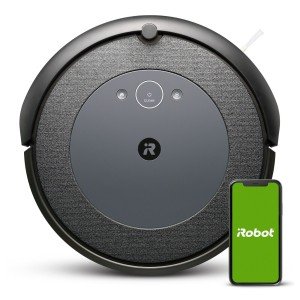
Best Roborock Vacuum
Add a review FollowOverview
-
Founded Date August 10, 1910
-
Posted Jobs 0
-
Viewed 26
Company Description
15 Best Robot Cleaner Bloggers You Should Follow

The Rise of Robot Cleaners in Commercial Spaces
Introduction
Over the last few years, improvements in technology have triggered automation in numerous sectors, including whatever from manufacturing to consumer service. One noteworthy development in this arena is the introduction of robot cleaners in commercial areas. These automated cleaning devices have actually changed the way services approach tidiness and upkeep, offering an option that is not only efficient however also economical. As companies seek to improve their operational effectiveness while maintaining high requirements of hygiene, robot cleaners have ended up being an integral part of modern-day commercial environments.
Understanding Robot Cleaners
Robot cleaners are autonomous devices equipped with sensing units, cameras, and expert system that enable them to browse and clean various surfaces without human intervention. They can be found in different types and functionalities, catering to diverse commercial requirements. Here’s an overview of the primary kinds of robot cleaners:

- Autonomous Vacuum Cleaners: These devices are designed for efficiently vacuuming floorings, particularly in environments such as offices, retail spaces, and storage facilities.
- Scrubbing Robots: These robots are tailored for tough surface areas, utilizing scrubbing and cleaning options to deal with tough discolorations and grime.
- Disinfection Robots: Equipped with UV-C light or chemical sprayers, these robots concentrate on decontaminating areas, substantially minimizing the existence of hazardous bacteria and viruses.
Table 1: Types of Robot Cleaners and Their Features
| Kind Of Best Robot Cleaner Cleaner | Main Function | Perfect Environment | Key Features |
|---|---|---|---|
| Self-governing Vacuum Cleaner | Floor vacuuming | Workplaces, Retail Spaces | Sensors for browsing challenges, scheduling |
| Scrubbing Robot | Hard surface area cleaning | Storage facilities, Hospitals | Dual-brush system, adjustable settings |
| Disinfection Robot | Surface disinfection | Healthcare settings | UV-C or electrostatic spraying innovation |
Benefits of Using Robot Cleaners in Commercial Spaces
The integration of robot cleaners in commercial environments provides a myriad of advantages:
Increased Efficiency
Robot cleaners operate autonomously, permitting them to clean locations at any time of the day or night without the requirement for human guidance. This performance is particularly beneficial for large centers that experience high foot traffic, as these robots can cover more ground in less time.
Consistent Cleaning Quality
Robot cleaners are created to perform consistently, operating on pre-programmed settings customized to the particular requirements of the environment. This guarantees a reputable standard of cleanliness throughout the center.
Cost-Effectiveness
While the initial financial investment in robot cleaners may be significant, the long-term cost savings can be substantial. Robot cleaners lower the requirement for a large cleaning staff, reduce human mistakes, and can reduce costs associated with cleaning materials.
Boosted Safety
In settings like healthcare facilities and laboratories, keeping hygiene is essential. Robot cleaners reduce human contact with possibly harmful products or locations, thereby enhancing general safety.
Eco-Friendliness
Lots of modern-day robot cleaners are developed with sustainability in mind. They effectively use water and cleaning products, often equipped with settings that reduce waste. This contributes to a greener method to cleaning in commercial areas.
Secret Considerations Before Implementation
While the benefits are significant, services need to consider numerous elements before purchasing robot cleaners:
-
Space Design: The layout of the facility can affect a robot’s efficiency. Areas with numerous obstacles may need more advanced designs geared up with advanced navigation systems.
-
Maintenance: Although robot cleaners are normally low-maintenance, they do require periodic checks to make sure ideal performance. Having a devoted service technician or service agreement might be necessary.
-
Software Updates: The technology behind robot cleaners progresses rapidly. Keeping the software as much as date is essential for maintaining functionality and security.
-
Combination with Current Systems: Understanding how robot cleaners can be incorporated into existing cleaning procedures is essential to maximizing their prospective benefits.
Case Studies: Successful Implementation of Robot Cleaners
Case Study 1: A Large Retail Chain
A large retail chain implemented self-governing vacuum cleaners across its various stores. The robots permitted cleaning to take place throughout hours of operation, which considerably minimized labor costs and enhanced total store cleanliness. The chain reported a 25% increase in consumer fulfillment, directly attributing it to the boosted shopping environment.
Case Study 2: A Local Hospital
A healthcare facility deployed disinfection robots to deal with intensive cleaning regimens, particularly in waiting areas and running spaces. These robots effectively reduced infection risks while enabling cleaning personnel to focus on other pressing jobs. The medical facility noted a significant decrease in post-surgical infection rates, verifying the effectiveness of robotic disinfection.
Frequently Asked Questions About Robot Cleaners in Commercial Spaces
Q1: Are robot cleaners ideal for all commercial environments?
- A: While robot cleaners are versatile, their suitability may differ based on space design and cleaning requirements. It is vital to examine the particular needs and layout of your commercial area.
Q2: How much do robot cleaners cost?
- A: The price of robot cleaners can range commonly based on their features and abilities. Basic models might start at ₤ 1,000, while sophisticated designs can cost upwards of ₤ 10,000.
Q3: How often do robot cleaners require upkeep?
- A: Robot cleaners generally need minimal maintenance. Regular checks and software application updates are suggested, while parts like filters may need changing based on usage.
Q4: Can robot cleaners work alongside human personnel?
- A: Yes, robot cleaners are developed to complement human personnel instead of change them. They can take control of routine cleaning jobs, allowing personnel to focus on more complex duties.
The commercial cleaning landscape is experiencing a substantial improvement through using robot cleaners. These devices complement human effort, improve tidiness, and contribute to cost savings, making them a worthy financial investment for companies looking to improve their operational performance. As technology continues to progress, the capabilities of robot cleaners are likely to broaden, even more strengthening their role in preserving tidiness in commercial spaces. With careful consideration of individual requirements and an ingenious technique, businesses can accept this technology to develop a cleaner, much safer, and more efficient workplace.
